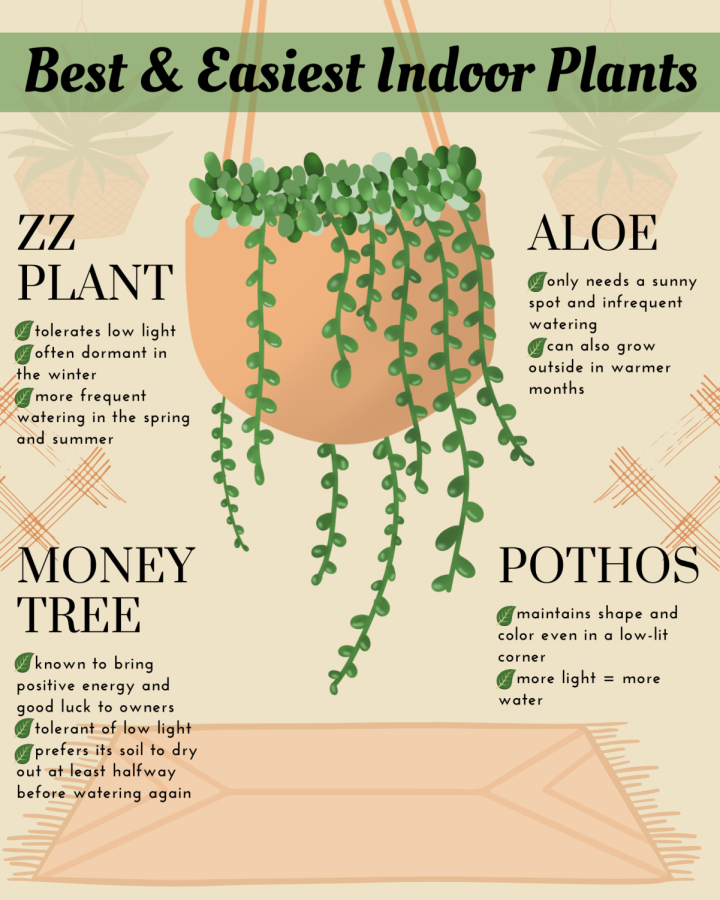A Guide to Plant Parenthood
The best indoor plants for winter and how to show them love
Infographic by Maya Sagett
January 18, 2023
That fabulous time of year has finally arrived: windows are shut, fuzzy socks are on, and annual family escapes to warmer states are just around the corner. But best of all, if you are notorious for your plant-killing abilities during the spring and summer months, now is the perfect season to become the best plant parent you can be to some easygoing, low-maintenance house plants.
The number one rule of thumb (or green thumb, as it were) for keeping indoor plants alive is determining the amount of natural light a space receives, and choosing plants accordingly. If you’re not one for measuring quantities of sunlight, however, finding out which direction your windows face is a good place to start. In general, south-facing windows give bright light, east- and west-facing windows give moderate light, and north-facing windows give low light. Most houseplants prefer to be acknowledged but still like to keep to themselves, so bright, indirect sunlight is the way to go, but many plants can tolerate lower light levels, like snake plants and zanzibar gems (better known as zz plants).
If you’re new to plant parenthood and don’t have the time for a needy child just yet with a schedule of its own, be sure to pick a plant that can keep up with your lifestyle. A busy social life, work or school schedule, and general forgetfulness that comes with the subscription to teenage years can lead to unintentional plant neglect. But, if you find a low-key, drought-tolerant zz plant, snake plant, paperwhite, or amaryllis bulb, they’ll still be thriving whenever it is you next decide to give them some attention. If you’ve got more time, though, there are plants that will be appreciative of just a touch more love: air plants, orchids, and ferns love a good skincare routine, so an extra spritz of filtered water to the face each day keeps humidity and hydration levels balanced for more delicate plants.
Keep in mind that droughts are better than floods: it’s ideal to under-water your plants than to overwater them (if you have to pick one), which can lead to root rot. Although we needy humans seem to need the perfect balance of hydration for, you know, survival, an independent indoor plant does not need a rigorous watering schedule; get to it when you get to it and they’ll be just fine. Check the potting mix or soil first, though, to make sure it’s dry at least two inches below the surface so that you don’t get off on a bad foot with your plant the moment it gets transferred to a pot.
The frequency of watering your plants will also change throughout the year. As it gets darker and colder during this lovely time of year, plants will start to grow slower due to less intense or lack of sunlight. When the heat is blasting in your house, soil tends to dry out quicker, and may need a bit more water. Don’t wait until your plants are thirsty and begging for water, which you’ll notice once leaves start to wilt or the soil looks like it’s pulling away from the sides of the planter.
Lastly, to be an elite plant parent, don’t be afraid to show your plant a little love, especially when you first bring it to its new home. Observing your plant will tell you when to water it and when to not, if the temperature is too high or too low, and if it’s getting enough sun. Don’t expect the plants to actually speak and tell you what they need, though, because they probably won’t (but, hey, maybe you’re special, I don’t know). Once your plant is settled into its home and new environment, the hardest part is over. Congratulations! You are now an official plant parent. Let your extremely easy new stage in life begin!



